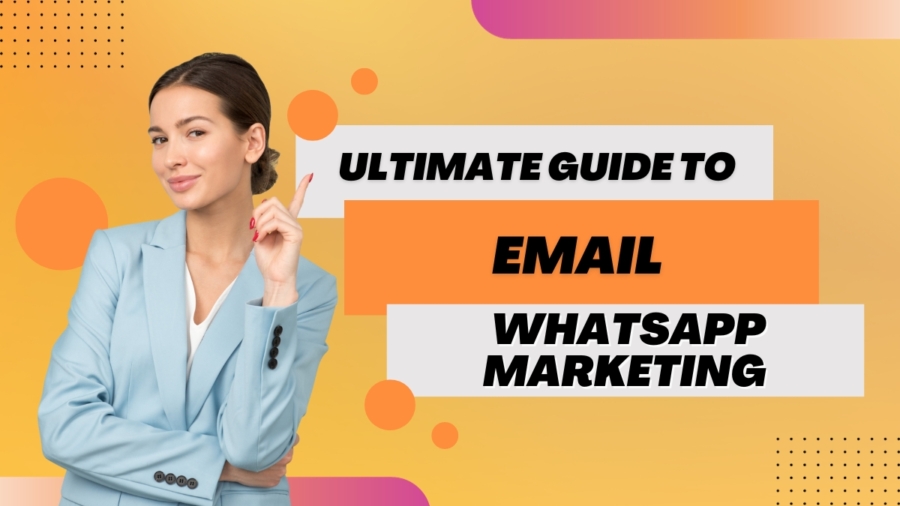The best free email marketing tools can help businesses to connect with their audience without breaking the bank. These tools offer features like templates, automation, and analytics. It also makes it easier to create and manage effective email campaigns. Here are the top options that can boost your marketing efforts without any cost.
Top 5 Best Free Email Marketing Tools:
Marketing trends and channels change with time, but email has stayed strong. It is still the top channel for content marketing. 87% of B2B and 77% of B2C marketers use it to encourage their audience. Email can also boost your other marketing channels, like social media.
However, creating great-looking emails from scratch can be time-consuming. Marketers may spend too much time making and sending emails without efficient tools. It does not look good, hurting productivity and ROI.
Many companies avoid investing in tools to simplify the process. They are thinking they will be too costly. Although, there are plenty of free email marketing tools that save time and money. Here are the five best free email marketing tools to improve your marketing efforts.
1. Sender:
Sender is one of the best free email marketing tools available, with features. It ensures your emails get delivered. You can create beautiful newsletters without needing to know HTML. It is by choosing a template and customizing it with images, videos, and text. You can also personalize newsletters for each recipient to make a bigger impact.
One of the main reasons Sender is on our list is its strong analytics feature. It lets you track who opened your emails, who clicked on the links, and when they were opened. It also helps you build accurate buyer profiles based on subscriber actions, so you can improve your email strategy and create compelling offers.

2. SendPulse:
SendPulse is known for its multi-channel marketing. But its email marketing feature is the most popular. It offers many professionally designed email templates. You can easily customize it with a drag-and-drop editor. You can then schedule these customized emails to be sent automatically. It is based on user behavior, event triggers, and other variables.
The subscriber rating feature in SendPulse is great for identifying your most valuable subscribers. It allows you to analyze open and click rates, as well as read and unread rates for each subscriber. You can also personalize your emails with replaceable text fields for name, gender, date of birth, age, and job role.

3. Mailchimp:
Mailchimp is a well-known leader in email marketing tools. Its free plan includes essential features like email creation and scheduling. What sets Mailchimp apart is its smart recommendations feature, which offers valuable insights to help you improve your marketing efforts.
Designing emails is simple with Mailchimp’s Content Manager. You can store and easily access your images and files. The platform also allows you to automate emails at key stages of the buyer journey. Such as sending welcome emails, order confirmations, and abandoned cart reminders.

4. Mailjet:
Mailjet offers user-friendly and collaborative tools for building effective email marketing campaigns. You can customize pre-designed templates to create responsive emails that look great on any device. If you are working with a team, you’ll appreciate the platform’s real-time collaboration feature for seamless teamwork.
Mailjet also allows you to add dynamic content. It makes it easy to personalize emails for each recipient and improve campaign results. Additionally, you can integrate Mailjet with your CRM and manage your mailing list from a single dashboard.

5. Hubspot Email Marketing:
HubSpot is known for its marketing automation platform. It has introduced a free email marketing tool that meets many small business needs. Whether you’re sending follow-up emails from lead offers, thank-you notes after purchases, or promoting campaigns, HubSpot Email Marketing’s free version handles it all.
The tool is user-friendly with its drag-and-drop visual editor and comes with ready-made templates to get you started quickly. What sets HubSpot Email Marketing apart is its seamless integration with other HubSpot tools, like the free CRM. Once you sign up, you get access to both tools. It allows you to build a centralized contacts database, organize it, and track email performance efficiently.

For more information about marketing channels read article: TOP DIGITAL MARKETING CHANNELS
FAQs:
Which is the best free email platform?
Here are some best free email marketing tools. Remind these platforms ever when you are thinking about the best free email marketing tools.
- Sender
- SendPulse
- Mailchimp
- Mailjet
- Hubspot
Is Mailchimp free?
The Free plan includes up to 500 contacts and allows you to send up to 1,000 emails per month, with a daily limit of 500 emails. The plan also lets you try out other marketing tools, such as postcards, landing pages, and social ads, though extra fees may apply.
Can I start email marketing for free?
Free email marketing tools are applications or software that help you improve your email marketing without any cost. Many platforms offer free tools, but Mailchimp stands out by providing robust features without any limitations time restrictions, or purchase requirements.
How to send 1000 emails at once for free?
With Selzy, you can use the free plan to send up to 1,500 emails and manage 100 contacts. It’s a great way to get started and see how everything works. When you’re ready to handle larger volumes, check out our pricing plans to find the one that best suits your needs.
Conclusion:
This article gives you some best free email marketing tools. You can learn a lot of information from this article, and FAQs also. Make sure to read this article thoroughly and grab information. Email marketing is easy and simple, not very difficult.






